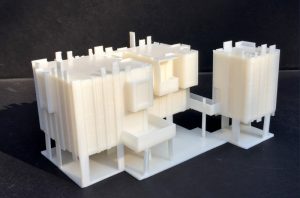
In this 21st century, 3D printing also known as additive manufacturing has made many improvements and variations in the technology for making it more accessible, cost-effective, and precise. 3D printing has grown in diversity in recent years and leads to various usages in all kinds of industries and fields.
A recent report by Grandview Research indicated that the 3D printing industry market was valued at around 16.75 billion U.S. dollars in 2022. It is also estimated that it is expected to expand at a CAGR of 23.3% from 2023 to 2030.
The 3D printing technology has more potential applications in serving across multiple industries, including manufacturing, education, entertainment, health care systems, and even more. The wider availability of 3D printing work had made many industries and organizations have been part of the development of each industry. Since 3D printing work is very promising in both manufacturing and availability, more and more use cases are springing up.
Use cases of 3D Printing
Let’s dive into the 20 use cases of 3D printing technologies.
1. Automotive Industry
As additive manufacturing technology is matured and progressive in the current needs, that had helped the automotive industry to reduce its demand by providing more optimized productions, streamlined supply chains, and logistics. 3D printing development is increasingly widespread and being explored across all areas of automotive production.
3D printers have significantly changed the way automotive prototypes are created, designed, manufactured, and developed in the automotive industry. The first technology for building parts of the automotive industry was selective laser sintering or binder jetting. In earlier days, these two methods have been used to produce aesthetic parts but they were weak and had no longer life.
In recent days, there are more robust technologies that are used for automotive 3D printing, such as fused filament fabrication (FFF) or fused deposition modeling (FDM). This is not only used for the production of prototypes but also for end-use parts.
Here are a few examples from well-known automakers using 3D printing technology, which results in the best efforts and goals in today’s world.
Ford Motor Company had invested around $ 45 million in its advanced manufacturing center incorporated with 3D printing for their production lines. In the year 2020, it has marked Ford’s performance as the highest-performance division, which had manufactured the largest 3D-printed metal automotive part in history.
BMW is one of the top-notch automakers and has several success stories in implementing and aligning printed metal parts to their vehicles using additive manufacturing. By 2010, BMW manufactured more than one million 3D-printed parts which exceeded the limit. BMW aims to produce 50,000 components per year and 10,000 individual spare parts.
Volkswagen is one of the early adopters of 3D printing, which is using it for several years. The main application of additive manufacturing technology in Volkswagen is for implementing the tools, the jigs & fixtures, and prototyping, which results in saving more money and time.
A report by Global Automotive Outlook 2017 forecasts that the parts and accessories market would reach around 17 billion by the end of 2025. (https://archer-soft.com/blog/how-3d-printing-used-automotive-industry)
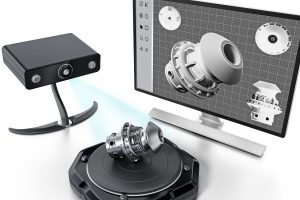
Advantages of 3D printing in the automotive industry
- 3D printing is a total game-changer in the automotive industry because it produces less expensive printed plastic parts in a shorter duration.
- The reduction in the production of costs increases more number of manufacturing complex designs.
- 3D printing solutions consume only lesser materials for production, which is beneficial for all stages of manufacturing in the automotive industry.
- 3D printing works allow designers to apply multiple options of the same detail and iterations in the manufacturing of new model development.
- 3D printing works provide more flexibility which results in efficient designs, and it can be modified to get the desired design of specific parts.
2. Education
3D printing empowers the educational sector at all school levels from primary to secondary schools, including universities, libraries, and technical colleges. Integrating 3D printing technology with education helps students to learn more about recent technologies and scientific concepts. 3D printing technology helps engineering and architecture students by taking a print of the prototypes and 3D models of their desired design to understand the concepts. In history and geography classes, students can print out historical artifacts, topography, and demographic, or population maps.
Teachers make use of 3D printer visualization for the improvisation of spatial learning. A recent study has remarked that 3D printing improved spatial learning from the year 2014. MIT and the University of Texas and Virginia Tech have their graduation and certification courses covering 3D printing and principles and design for 3D printing.
Advantages of 3D printing in the education industry
- 3D printing integrated with education promotes problem-solving capabilities and skills of persistence powers to overcome challenges.
- Imparting new ideas and methodologies in education helps the students to solve real-world problems, which led to learning about empathy and teamwork.
- 3D printing makes sure to provide both theoretical as well as hands-on practice to students in the educational sector.
- 3D printing encourages students by improving their creativity and innovative level higher and higher by building prototypes.
- It is more affordable and user-friendly, and both students and educators can utilize this unlimited learning opportunity.
3. Digital Dentistry
3D printing technologies thrive in digital dentistry with digital workflows resulting in customized solutions for dental problems. This technology helps the dentist to scan the patient’s mouth with a small digital wand, and it can be viewed as a 3D image of teeth or gums. Dentists can digitally design the tooth repair and print the result using computer-aided software (CAD). By the same process, orthodontic models, highly accurate crowns, bridge models, surgical guides, aligners, castable restorations, retainers, and long-term biocompatible dental products like splints are created.
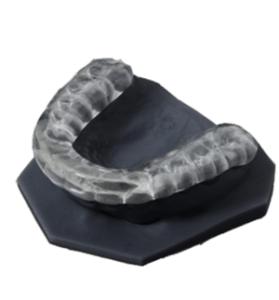
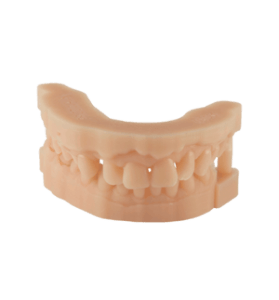
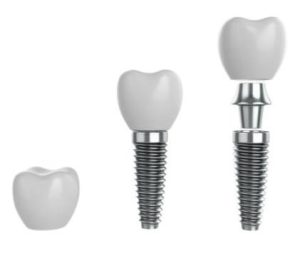
Advantages of 3D printing in the digital dentistry
- In digital dentistry, 3D models are more stable and durable, the lines and edges on a 3D model are very precise.
- The 3D printing of digital dentistry enables improved efficiency and saves both time and cost.
- One of the main advantages of 3D printing in the digital industry reduces errors and allows accurate fit.
4. Aerospace
The aerospace industry was one of the earliest adopters of 3D printing technology in the 1980s, and still, it is considered to have the highest rate of adoption of 3D printing technologies. Due to the demand for more aircraft parts, the aerospace industry uses 3D printing works for greater production and supply chains. It significantly provides fast delivery of finished parts and the capability to design for additive manufacturing (DfAm). A study in 2015 proved that the aerospace and defense industries contributed 16% to 3D printing around $4.9 billion across the globe.
Here are a few examples from well-known companies using 3D printing technology, which leads to interesting benefits of 3D printing.
Boeing incorporated 3D printing for satellite production, and the first 3D-printed metal was created in the year 2019. The antenna was launched last August 2020 and was built for Spacecom, the Israel company. The major benefit of Boeing from additive manufacturing is the production of its finest jets.
NASA has turned to additive manufacturing for developing space exploration in different ways. Around 7, 000 pounds of spare parts are sent to the International Space Station (ISS) every year, to reduce the cost of production 3D printing technology is used here.
However, 3D printing technology is used for manufacturing complex structures, sophisticated materials, or cost-efficient parts that need to meet the highest standards. It also manufactures interior aircraft components such as cockpit dashboards and door handles.
Advantages of 3D printing in aerospace industry
- 3D printing technology is used to create more fixtures, jigs, gauges, and templates.
- With the help of 3D technology in aerospace, it reduces aircraft weight with 3D components and eliminates the expensive tooling changes.
- And, the assembly of parts in the aircraft and quality assurance costs is reduced.
5. Art and Jewelry
3D printing technology has a significant impact on 3D jewelry printing, the 3D printed jewelry will have high resolution and high accuracy. The three methods of 3D jewelry printers are Drop demand, Digital Light Processing (DLP), and Stereolithography (SLA). It helps traditional jewelry makers to customize the design asked by the customers for a specific model. Jewelry is printed only when the customer is satisfied with the prototype. The material used for casting 3D printing is affordable and flexible.
3D printing allows the designer or jewelry maker to express their creativity and innovations with fewer constraints. Arts and Jewelry manufactured by this technique can reach the market faster with low costs. Solid Scape is one of the reputed manufacturers of 3D printing jewelry that had recently entered India.
6. Glasses and Eyewear
The evolution of the optical industry had grown from time to time, 3D printing technology helps in designing and manufacturing glasses. The production of glasses and eyewear is higher using 3D printing works compared to the standard methods of production. Using 3D printing technology, the optical industry produces 100% customized eyewear with ideal frames. Some of the 3D-printed glasses and their manufacturer names are listed below.
- Screwless – Ericsko.
- Simple – Cirion.
- Cat-eye – M Badia
- Rectangular – The drunk penguin
- Bendable – Fbillowes
- Flat – Langfordw.
As of 2019, the market of the Eyewear industry using 3D printing technology is around $500 million and it is predicted that it would grow 2.5x times by the end of 2027.
7. Prosthetics
Thanks to 3D printing making prosthetics’ costs are very affordable because commonly prosthetics’ price range from $5000 to $50,000, which is quite expensive for a mid-range of people. Many companies had incorporated 3D printing to produce more prosthetics and make them accessible to a range of people who needs them. Custom prosthetic covers are created using 3D printing technology and photogrammetry. Nowadays, Modern prosthetics come with a microprocessor to help in improving mobility. knee amputations and transfemoral amputations are examples of modern prosthetics.
8. Architecture
The architecture industry is already based on geometric design, prototyping, and modeling, whereas the advances in 3D printing technology are being applied more and more. The 3D printing technology easily enables the digital workflow of complex architectural scale models and improves the 3D modeling phase of constructional design. It allows the architects to see the fine details with much greater visualization.
Benefits of 3D Printing in Architecture industry
- 3D printing in architecture increases faster production with zero material waste.
- It is fully automated which eliminates manual errors.
- Using additive manufacturing in architecture, results in faster technology reduce supply costs, and which are eco-friendly.
9. Entertainment
3D printing has already collaborated with the entertainment industry which is widely used for practical visual effects and costuming. Hollywood movies, it had changed the movie sets that are built using prototyping of 3D printing technology.
It is a total game-changer in the movie and DFX industry to create props and costumes with high standards. The action figures and memorials in the movie studio and fan clubs have been created using 3D printing technology.
10. Shoes
In recent years, 3D printing has been used for footwear prototyping that allows footwear professionals to enable craft test shoes before making their final products. It is forecasted that the revenue of the footwear market is around $260 billion in 2018, and the 3D printing technology in footwear is expected to reach around $6.3 billion by the end of 2028. With the help of 3D technology, shoes can be customized by choosing their look and color.
Some of the leading additive manufacturing brands are New Balance, Adidas, Nike, Under Armour, and Reebok resulting in the production of millions of final parts. Adidas is a top brand that had implemented additive manufacturing in footwear mass production.

The Adidas company had already manufactured S100,000 pairs of shoes with plastic midsoles using 3D printing technology digital light synthesis (DLS). The Current models of Adidas are AlphaEdge and Y-3 Runner. Nike was one of the earlier adopters of intensive 3D printing technology in the production of high-performance products and uses it for faster iterations. The first 3D textile footwear “Nike Flyprint” is manufactured by the company “Nike” using Solid Deposit Modeling (SDM). Reebok is a top brand that manufactured liquid float ride shoes in the year 2018 using the 3D drawing process.
11. Fashion
3D printing technology or additive manufacturing adds more interesting facts to the fashion world by creating more prototypes and models for the designers. This technology led to the creation of more fantastic 3D printed fashion in the garments, ornamental, and fashion industries. It allows the designers to work with a range of new possibilities, it not only alters the production of textiles, but it will also lead to the production of new textiles.
Artists who follow the 3D printing workflow produce smart clothing as personalized, wearable, and data-driven ones with an artistic purpose.
12. Music
3D printing has been already integrated with the music industry, to produce 3D printed musical instruments, 3D printed records, 3D printed speakers, and 3D printed headphones. The 3D printing technique allows the designer to create the instrument digitally, and then print out the parts in various phases of iteration. The famous French violin manufacturing company 3DVarious focuses on designing and manufacturing electric violins using 3D printing. The two major instruments designed using 3D printing are violins and Trudel.
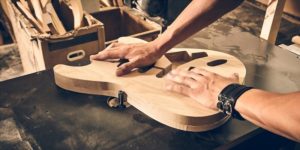
Final Words
With 3D printing technology, designers can customize a musical instrument at a very low or reasonable price. A few famous such as VLANLAB, Olaf Diegel, and Syos are responsible for creating instruments using 3D printed technology. There is no doubt that 3D printing is evolving and changing the music industry in positive ways and enriching it with numerous applications.
Generally, 3D printing is a key driver for more scopes and numerous applications in the current era. The implications of 3D printing technology are spreading and advancing over the past five years and the technology has huge potential to meet all the current needs.
References:
https://www.grandviewresearch.com/industry-analysis/3d-printing-industry-analysis
Automotive Industry –
https://archer-soft.com/blog/how-3d-printing-used-automotive-industry
https://www.3dcastor.com/post/the-best-applications-of-3d-printing-in-the-automotive-industry
Digital Dentistry –
https://www.marketsandmarkets.com/Market-Reports/dental-3d-printing-market-258228239.html
https://www.evansondds.com/how-3d-printing-is-revolutionizing-dentistry/
Glass and Eyewear –
https://www.transparencymarketresearch.com/3d-printing-in-eyewear-market.html
Shoes –
https://www.smartechanalysis.com/wp-content/uploads/2019/05/SmarTech_WP_Footwear.pdf


